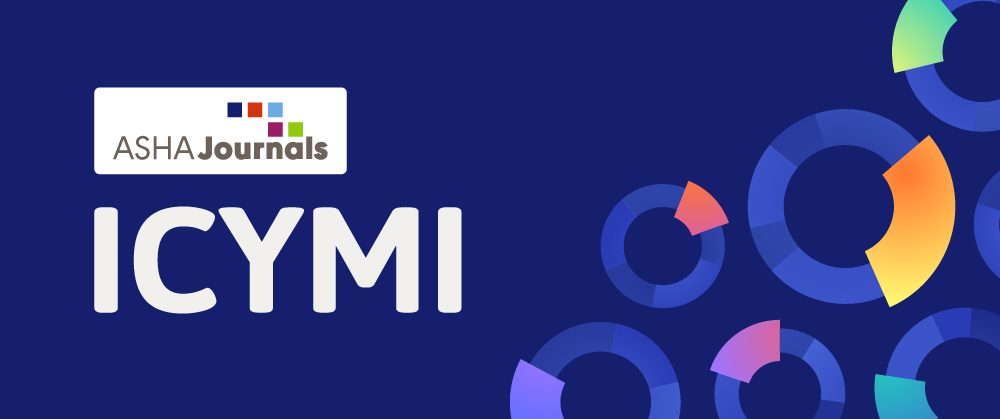As an ASHA member, you have plenty of resources available to help you succeed in your career and education. The ASHA Journals play a part in that, publishing more than 800 articles a year. With so many articles, we’re helping by highlighting work your colleagues are already reading.
As we’ve done in the past, we’re featuring our top trending articles of the last year in one easy place. Read more below to see what your friends and colleagues read in 2024—in case you missed it!
Speech and Language Disorders in Children
Treatment for Childhood Apraxia of Speech: Past, Present, and Future: For the second year in a row, our top article focused on apraxia of speech—this time, in children. This review gives pediatric speech-language pathologists (SLPs) a wide overview of the current evidence for treating childhood apraxia of speech, including new trends as well as current gaps.
A Review of Screeners to Identify Risk of Developmental Language Disorder: Our second most read article summarized, compared, and evaluated screening methods that SLPs use to identify children who may have developmental language disorder (DLD). The authors highlight screeners that meet their standards and point to areas for improvement in others.
Most-Read Resources for Audiologists
Relationships Between Auditory Processing and Cognitive Abilities in Adults: A Systematic Review: This article isn’t just racking up downloads, it’s already making an impact by being cited in other works! Learn how to create clinical management plans and better understand the complex relationship between cognitive and auditory processing.
New Hyperacusis Therapy Combines Psychoeducation, Sound Exposure, and Counseling: A new hyperacusis therapy combines sound exposure with breathing and relaxation strategies. Individuals with hyperacusis were able to take the skills that they had learned in therapy and use them in their daily life—and it was effective 6 months after the end of therapy.
A Consensus to Revise the Minimum Speech Test Battery–Version 3: The Minimum Speech Test Battery (MSTB), widely used for cochlear implant (CI) candidacy evaluations, was last updated in 2011. Due to changes in candidacy, a team of audiologists has revised the MSTB to provide clinicians with updated guidance on CI candidates and recipients.
Trending Articles for SLPs
Cough: An Introductory Guide for Speech-Language Pathologists: For individuals with various cough disorders, SLPs can offer speech therapy strategies in addition to medical treatments from other professionals. This introductory guide can help you get started focusing on deliberate modification and coordination strategies in the clinic.
Behavioral Management of Respiratory/Phonatory Dysfunction for Dysarthria Associated With Neurodegenerative Disease: A Systematic Review: SLPs can use a wide range of therapeutic approaches when working with individuals with dysarthria due to neurodegenerative disease, including some approaches not previously captured in review articles. Check out the latest details on how SLPs can clinically manage respiratory and phonatory dysfunction in this population.
School-Based Resources
Maximizing Student Outcomes in Schools: Data-Driven Individualized Education Program Goals and Objectives Aligned to the Standards: School-based clinicians can play an important role in helping students achieve performance measures and advance in school. Check out these data-driven tools and methods to help students meet grade-level standards and curriculum.
LanguageScreen: The Development, Validation, and Standardization of an Automated Language Assessment App: Language difficulties are more common than speech difficulties and can be more difficult to spot, resulting in poorer educational achievement. Read about a mobile application that can help you assess children’s language ability using data samples from more than 300,000 children.
The Effect of Background Noise, Bilingualism, Socioeconomic Status, and Cognitive Functioning on Primary School Children’s Narrative Listening Comprehension: During the first years of primary school, children rely on verbal information to acquire knowledge. This article explored multiple factors that may affect narrative listening comprehension in young children, and was one of our most talked-about articles of the year online.
And More Information You’re Looking For
Articles from ASHA’s journals can help you keep up with the latest developments and better assist and advocate for the people you work with. Head over to our main hub on ASHAWire to explore more trending articles from across our journals!







